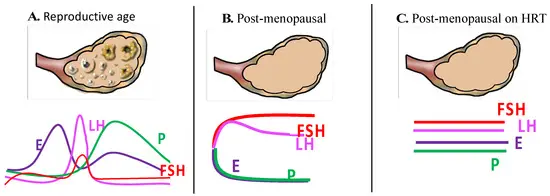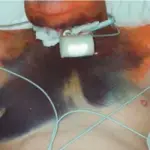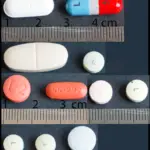Menopausal hormonal therapy Injury is the injury caused by medication that contains female hormones
What is the Pathology of Menopausal Hormonal Therapy Injury?
The pathology of menopausal hormonal therapy injury is:
-Etiology: The cause of menopausal hormonal therapy injury is estrogen
-Genes involved: None.
-Pathogenesis: The sequence of events that lead to menopausal hormonal therapy injury is the estrogen, which the body stops making in menopause.
-Morphology: The morphology associated with menopausal hormonal therapy injury is unknown.
-Histology: The histology associated with menopausal hormonal therapy injury shows atypical hyperplasia.
How does Menopausal Hormonal Therapy Injury Present?
Patients with menopausal hormonal therapy injury typically affect females present at the age range of 35-55. The symptoms, features, and clinical findings associated with menopausal hormonal therapy injury include deep vein thrombosis, pulmonary embolus, bleeding, bloating, breast tenderness or enlargement, headaches, mood changes, nausea, hot flushes, night sweats, sleep disturbances, emotional instability, anxiety, depression, vaginal dryness, as well as increased risks of osteoporosis and cardiovascular disease.
How is Menopausal Hormonal Therapy Injury Diagnosed?
Menopausal hormonal therapy injury is diagnosed using ultrasound, FSH levels, blood sugar levels, urine tests.
How is Menopausal Hormonal Therapy Injury Treated?
Menopausal hormonal therapy injury is treated with combined estrogen-progestin therapy or hysterectomy in advanced cases
What is the Prognosis of Menopausal Hormonal Therapy Injury?
The prognosis of menopausal hormonal therapy injury is fair if treated properly.



